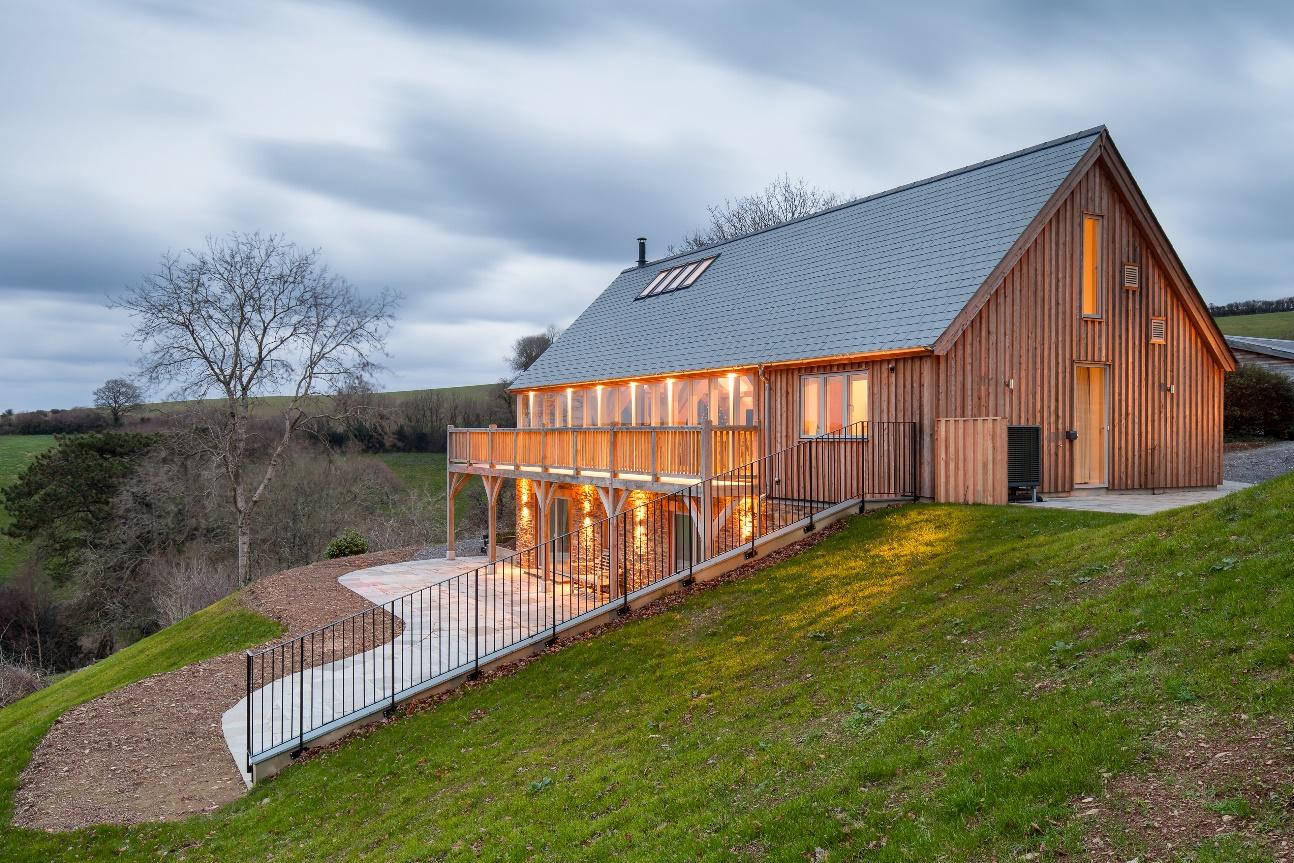
So far, we have understood Vastu guidelines under various heads. Here I will introduce you to yet another important aspect, the slope of the soil and its impact. These impacts depend on the directions in which the land is sloping. Before buying any piece of land or empty plot, it is essential to analyse the natural slope of the plot. Vastu Shastra believes that, like the two houses can never be the same, similarly two plots of land can never have the same energy levels/ forces.
The natural slant or slope plays a vital role in balancing the overall energy of any plot. Like other factors we have discussed so far, just the slope and its direction must never be the only criteria of accepting or rejecting a plot. It is believed that energy patterns of the natural slope of the plot can never be changed or corrected. While some minor Vastu conflicts can be corrected, to some extent, by following certain remedial measures or even reconstruction in some cases, the slope of the site is a natural element and cannot be altered at all. Even if we try to manipulate the slope of our piece of land, the slope of the nearby areas will remain the same as the natural slope of land, and hence will not be of any help.
As per our checklist, perfect weightage must be given to all basic Vastu Shastra fundamentals, including the slope and the main directional axis of the land, before drawing any conclusion. It is therefore crucial to check, whether the natural slope and direction are favourable or not before one finalizes the plot. Vaastu lays down guidelines to aid in the selection of a site with the ideal 'Slope'.
The word Slope applies not only to the land that we are purchasing but also to land surrounding our property, floor levels and roofs within a building and a room. Generally, the slopes that influence the Vaastu of a property the most, are the natural slopes of the surrounding land and the property itself. A downward slope amplifies the flow of energy down the slope.
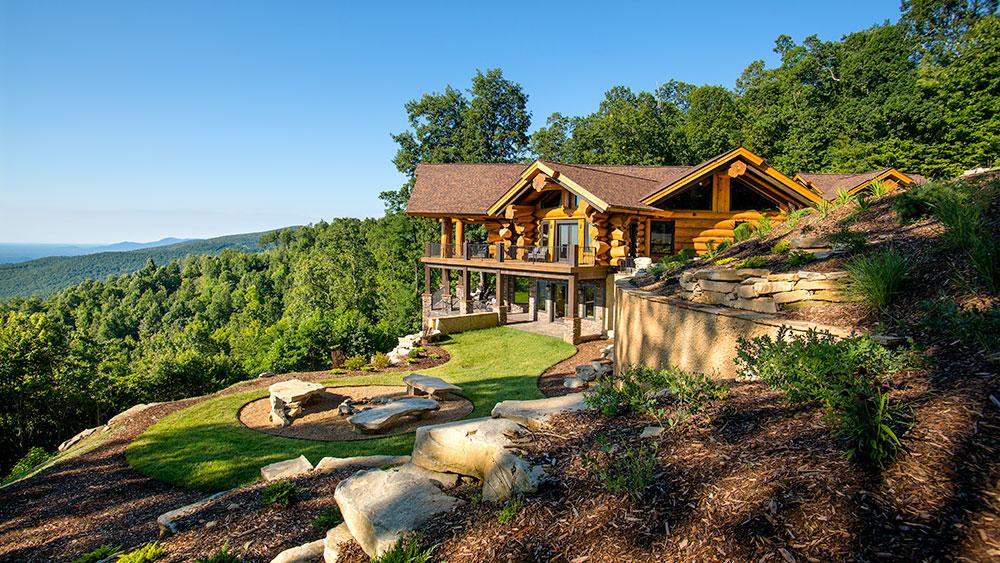
Since Vastu is a science, every guideline is based on logic and reasoning. As an Architect, I have attempted to understand and explain these guidelines rationally and scientifically under the following headings.
01. What is the ideal direction for the slope of a site?
02. What should be the slope of the site, for each of the four directions?
03. Vastu guidelines for site with reference to the slope of the land?
04. Remedies for the sites which do not have the required slope of the land?
Let us now understand these points thoroughly with some logical reasoning.
What is the ideal direction for the slope of a site?
According to Vastu Shastra, the slope of a site must be in a suitable direction. It is believed that any elevation or depression in the wrong direction can lead to undesirable results in terms of bad health, loss of wealth and other complications. Ideal slope affects life, happiness, and achievement of the occupants while wrongly sloped buildings have an adverse effect. This is because the flow of energies in such plots will not be in harmony with the surrounding energies. Therefore, while buying a plot for residential or commercial purposes, one should always examine the slope of a site.
The North-East half of the plot is called the Solar half and the South-West half is called the Lunar half. Ideally the Solar half (Sun) should be lower than the Lunar half (moon's surface). This ensures the ideal flow of light, solar energy & polar energy from east and north and water flows from West to East and from South to North. This type of plot brings joy and happiness, good children and overall success in life to the occupants of the building. We can summarize it briefly as, the:
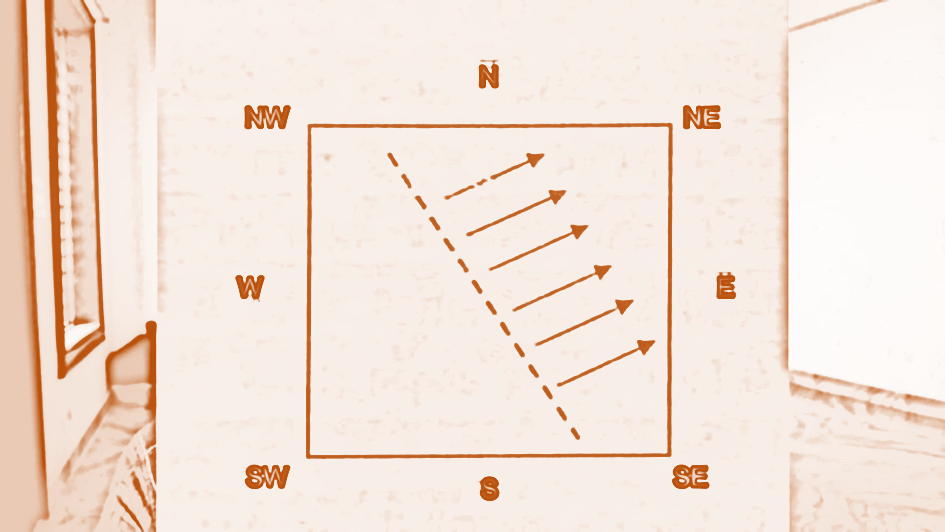 North-East corner should be the lowest,
North-East corner should be the lowest,
North-West should be higher than the North-East corner,
South-East should be higher than the North-west corner.
South-West should be higher than the South-East corner.
Hence, the downward slopes should be towards the North, East and especially North- East. The North-East corner should be the lowest and the South-West corner should be the highest.
The Logic Reasoning- We have read it many times now that the light and sun rays are the most beneficial in this direction. The slope of the land in this direction ensures the unobstructed flow of light and solar energy from the North-East corner (constant morning sunlight) into the house. Also, when the South- West corner is higher than the North-East corner, it serves as a buffer (to the West and South-West sunrays) and prevents the heating of the rest of the house or the building.
Hence it is believed that no matter what, the North-East should never be higher than any other part of the property. Although it is acceptable if the land is completely flat.
The Logic Reasoning- If the land is completely flat, then it would not create any negative impact to the flow of energy and the movement of light and sun rays will remain unaffected and hence it is acceptable.
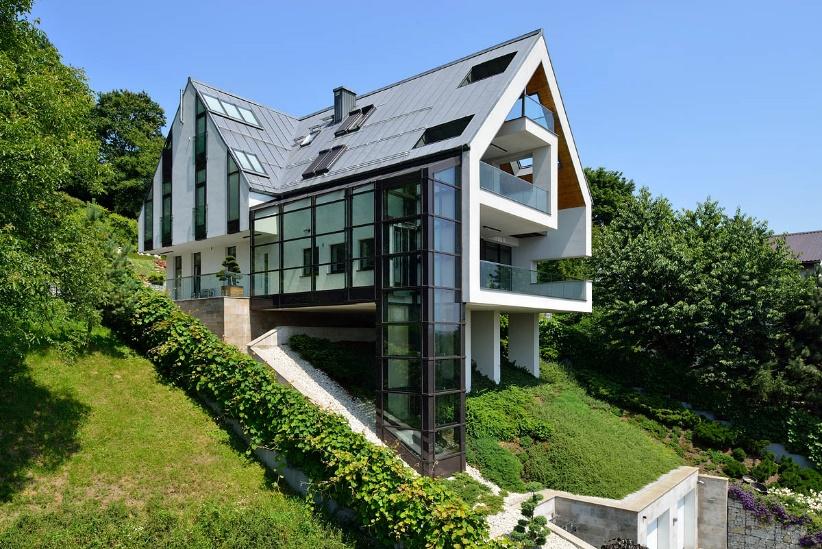 How should the land slope, for each of the four directions?
How should the land slope, for each of the four directions?
Time to discuss the slope of the land for each of the cardinal directions. For each of the directions, it is mandatory to have the slope in the scientifically appropriate direction to extract the maximum benefits from it.
East facing sites - For the East facing sites the slope should be downwards towards the North-East direction from the South-East, from the North- West to the North-East and from the South-west corner down to the South-East. Thus, creating the North-East corner, the lowest.
West facing sites - For the West facing plots, the slope should be directed downwards to the North-West corner from the South-West, from the South-West towards the South-East and from the North-West corner down to the North-East corner. This ensures that the North-West corner is low.
North facing sites - For North facing plots, the site should slope down from the North-West corner to the North-East, from South-East towards the North-East and from the South-West downwards to the North-West corner to ensure that the North-East corner is the lowest.
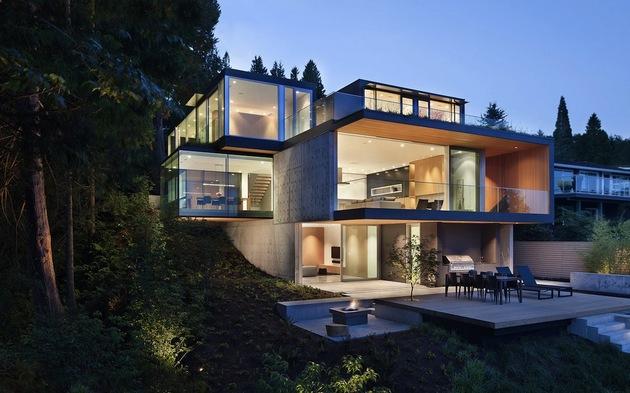 South facing sites - For South facing plots the slope should be downwards to the South-East corner from the South-West corner, downwards from the South-West to the North-West and down from the South-East to the North-East. This way the South-east corner is low.
South facing sites - For South facing plots the slope should be downwards to the South-East corner from the South-West corner, downwards from the South-West to the North-West and down from the South-East to the North-East. This way the South-east corner is low.
The Logic Reasoning- In all these cases we are trying to ensure that we get a piece of land which slopes towards the direction from where we can extract maximum benefits in terms of morning sun rays and sunlight from the North and East direction. Also keeping the South-West corner higher to avoid the harsh sun rays in the afternoon.
Vastu guidelines for site with reference to the slope of the land?
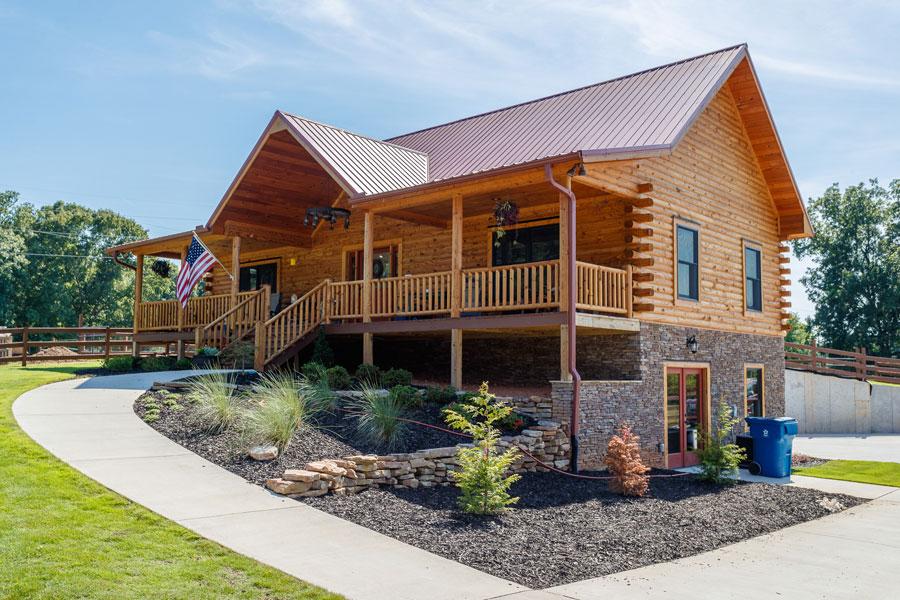
There are two major points which can be kept in mind -
We should avoid plots with a depressed or raised centre: This means avoiding plots which are elevated or humped at the centre and sloping on all sides and avoiding plots that are depressed at the centre.
The Logic Reasoning - If the centre of the plot is too depressed, it will be difficult as well as expensive to level the site for construction. It may even have rocks below it, which will again be a costly affair to remove them. It will also accumulate water during the rainy season which will cause seepage and dampness in the structure. It can also weaken the foundation of the building.
If the centre of the plot is either too elevated or humped, it will not be easy to level it or design it. In both these cases, the houses will have to be designed in such a way that the same can be utilized by creating levels in the structure. For example, while designing the houses, on the hilly areas or sloped sites, we always keep in mind the slopes and direction.
The road level should be lower than the Site: We must have noticed that right from the ancient times in villages and cities, the plinth or the base level of the house, used to be higher than the road level in the villages. Infact, some of the myths believe that the higher the plinth of the house, higher will be the social status of the person owning that house. As per Vaastu, the level of the house should always be higher than the road level.
The Logic Reasoning- Normally, there is a storm water drain between the plot and the road, so when there is heavy rainfall, even if the drain overflows, the excess water will flow onto the road instead of the plot. Also, all the excess water from the plot will flow out into the drain and road instead of vice-versa.
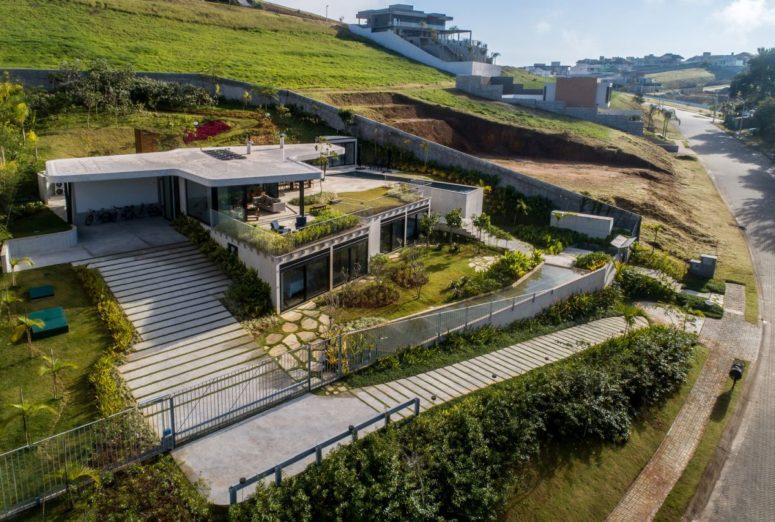
Remedies for the sites which do not have the required slope of the land?
We have discussed the sloped sites and the things we should keep in mind while designing them. But in the case of the cities, it is actually very difficult to get sites that will exactly meet the requirements of Vastu. However, there are ways of correcting sites, to an extent, that are not in accordance with Vastu.
For the site sloping down from the North-East:
The Solution- If the North-East corner is at a higher elevation than other sides of the property, we can dig soil from that corner and dump it in the South and West portions. In this way the land will slope down from the South-West toward the North-East.
For the site with a raised/humped centre:
The Solution- If the plot is raised in the centre then, the earth can be dug out and dumped towards the South-West of the plot.
For the site with a depressed centre:
The Solution- If the plot is depressed in the centre, then earth can be dug out from the rest of the Site and filled in the centre to balance out the levels.
Although these are not the perfect solutions as we will not be able to modify the slope of the neighbouring land but can be of some help to an extent. These are also costly solutions as we will have to unnecessarily dig the soil and move it to the other area. The other solution that I can think of is designing the house in such a way that it meets the other aspects / guidelines of Vastu Shastra and utilising those elevations / depressions intelligently in our design, as per the guidelines. Here comes the role of an Architect who can wisely and judiciously make the best use of the site amalgamating the site slopes with the design of the building rather than blindly following the guidelines and discarding the plot just because it is not as per Vaastu.
 She is an Architect, Interior Designer and a Vastu Consultant, with more than a decade of experience in conceptualization, designing and construction of diverse architectural projects. An alumnus of IIT-Roorkee, she has a thorough background in architecture and interior designing with expertise in directing all project phases. Her passion towards architecture inspires her to keep learning about various new trends yet following the age-old traditions.
She is an Architect, Interior Designer and a Vastu Consultant, with more than a decade of experience in conceptualization, designing and construction of diverse architectural projects. An alumnus of IIT-Roorkee, she has a thorough background in architecture and interior designing with expertise in directing all project phases. Her passion towards architecture inspires her to keep learning about various new trends yet following the age-old traditions.
NEXT ARTICLE